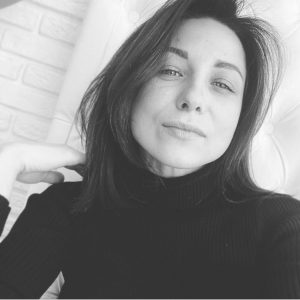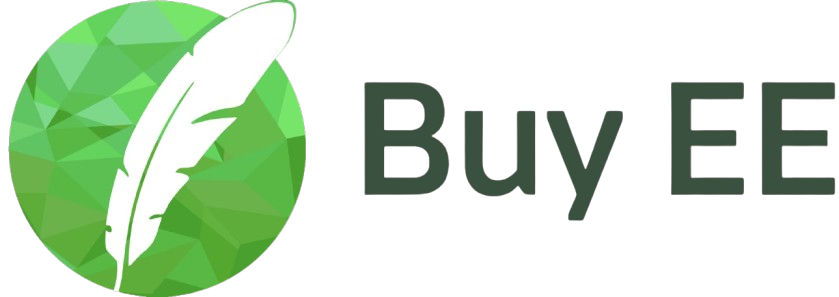Writing a Visual Arts Extended Essay can seem daunting, particularly if you don’t know how to begin. As an experienced IB writer, I understand that students often struggle to organize their research, choose the right topic, and follow IB’s tight rules. Writing a great Visual Arts EE can be fun with the proper method!
This guide will help you to write a perfect paper, from picking a good research question to structuring and sending your final essay.
What Is a Visual Arts Extended Essay?
According to general IB standards, Visual Arts Extended Essay is a 4,000-word solo research paper that helps students examine, understand, and critically evaluate visual arts-related themes. Unlike regular papers, the EE allows students to study how art connects with society, history, and theory in an organized and intellectual way.
I see this essay as a great chance to mix imagination with scholarly research. A Visual Arts Extended Essay can include artworks, design ideas, artistic methods, and cultural considerations rather than just written analysis like regular research papers. Remember, this essay should not just describe art. A good paper needs to focus on analyzing, interpreting, and arguing your points.
To write a strong Visual Arts Extended Essay, you should think about:
- Analyzing specific artworks. Instead of talking about all of an artist’s work, focus on looking closely at one or two pieces.
- Different artistic techniques. See how certain brushstrokes, digital tools, or drawing methods affect the meaning of a piece of art.
- Looking at how culture or history affects things. Examine how past events, government changes, or cultural trends influenced an artist’s creations.
- Different artistic styles and types of work. Contrast two art groups or artists, focusing on their differences and connections.
- The modern applications of visual arts. Examine how traditional painting methods affect current digital or business art.
These parts create a strong base for a well-organized Visual Arts EE. When organized well, your essay can demonstrate a good understanding of the topic and strong thinking skills while allowing your creativity to shine.
The Visual Arts EE helps students use visual objects as primary tools for their work. This means that besides reading books and papers, you could look at paintings, statues, ads, fashion designs, or digital media. Students who use both visual and written sources successfully, in my opinion, produce more thoughtful and persuasive cases.
- Theatre Studies Extended Essay Topic Ideas for IB Students
- Environmental Systems and Societies Extended Essay Topics
- Geography Extended Essay Topics
- How to Write IB Extended Essay
- How to Write IB Theatre Studies Extended Essay
How to Choose the Right Topic for Your Visual Arts EE?
Selecting the right research question is one of the most essential steps in writing a Visual Arts Extended Essay. From my experience, students who choose topics they are genuinely excited about tend to write better, more interesting essays. Passion makes the research process more fun and inspires you through the difficulties of writing a 4,000-word paper.
Additionally, choosing the right topic can set your essay apart from others. IB inspectors read countless Visual Arts EEs, so an original and well-thought-out subject can make your work more engaging and remembered. The key is to strike a mix between a topic that excites you and one that allows for good academic research.
Brainstorm Ideas for Your Essay Topic
A general topic is ineffective; you need a specific research question. A good Visual Arts Extended Essay should focus on a specific topic, such as a particular artwork, artist, or method, rather than being unclear or too general.
Here are some ideas to help narrow your focus:
- Compare the artistic methods of two artists from different periods.
- Examine how political events affected certain pieces of art.
- Examine the use of color psychology in current ads.
- Research into how digital art is changing modern art styles.
- Look into how social media influences modern art styles.
- Investigate how traditional writing affects today’s graphic style.
- Look at how a specific artist shows their national character in their artwork.
- Pay attention to how feminism has influenced the way stories are told visually.
After you have a general idea, you should turn it into a research question that meets the IB’s Extended Essay requirements.
Refine Your Research Question
Having a clear and organized research question improves the clarity and quality of your essay. A weak research question can lead to a messy or unclear essay, while a strong question helps you stay focused and makes your points clear and thoughtful.
Instead of asking a general question like “How has art changed over time?”, try something more detailed and focused, like:
✅ “How did Cubist ideas affect today’s graphic design?”
✅ “How did female groups influence Frida Kahlo’s self-portraits?”
✅ “How does street art question who owns art?”
✅ “How has fantasy changed modern digital illustration?”
✅ “How do colors and design in propaganda posters affect how people see things?”
A good Visual Arts Extended Essay research question should be:
- Clear – Don’t use complicated words or ask questions with several parts.
- Focused – Narrow your attention to a specific artist, style, period, or method.
- Analytical – Look more profound than just describing; explain how and why things happen in art.
Another helpful way to check your research question is to see if you can answer it with a thesis statement. If the answer is too basic or straightforward (like “Yes, art has changed over time.”), it means the question is too general. It’s a good option if it calls for analysis, explanation, and research.
Creating a clear, organized research question makes writing easier and improves your final essay.

How to Conduct Research for Your Visual Arts Extended Essay?
After you have your research question, you can start collecting sources. Many students make the error of depending only on internet searches, thinking that a quick Google search will give them all the information they need. IB evaluators want a combination of primary and secondary sources to show that the point is well-researched and complete. In my experience, using good sources can significantly affect your final grade, so you must spend time researching correctly.
Also, IB evaluators expect you to think deeply about the sources, not just give basic knowledge. It means you should look at different viewpoints, compare them, and question them rather than just copying books or articles. This will help you create a strong case.
Primary Sources – Direct Artistic Engagement
Primary sources give direct proof and enable original research. Here are some options you can use:
- Original artworks – Studying the arrangement, methods, use of color, and meaning in actual paintings, statues, or digital designs.
- Exhibition catalogs – Offering information about curators’ choices and art trends.
- Artist interviews – They help us learn about the artist’s goals, how they create their art, and the cultural background that influences their work.
- Personal analysis of visual elements – Your thoughts and understanding of what an artwork means and why it matters.
Primary sources let you interact directly with the art, making your essay more genuine and detailed. Primary sources are essential for your essay, but you should also use secondary sources to add historical and academic background.
Secondary Sources – Scholarly Perspectives
Secondary sources show how your case fits into current academic conversations. These sources offer views, historical background, and critical viewpoints on the visual arts. Good secondary sources include:
- Art history books – Background on artistic movements, cultural influences, and technical developments.
- Academic journals – In-depth analyses from art historians and scholars.
- Critiques and reviews – Professional opinions and interpretations of an artist’s work.
- Museum archives – Essays and detailed records on specific artists and styles.
I believe that a good Visual Arts EE needs a mix of primary and secondary sources. Secondary sources help you understand and interpret the meaning of your results, whereas primary sources let you interact with the art directly.
Writing and Refining Your Visual Arts Extended Essay
Writing your first draft is just the start! Many IB students do not realize how important rewriting is, but this is what turns good papers into great ones. In my experience, the best Visual Arts Extended Essays often go through many rounds of rewriting and improvement. Even if your first draft seems good, revising it carefully will make it more precise, organized, and profound in understanding.
A good strategy is to take a break from your essay for a few days after finishing the first draft. This helps you look at things with a new perspective, making it easier to find weak reasons, confusing explanations, or strange wording. I suggest you ask a teacher, EE supervisor, or friend to review your draft. Getting someone else’s opinion can help you spot mistakes you might miss.
Crush your IB goals with our extended essay writing service!
Leave the stress to our expert writers and enjoy some downtime. Excellence is just a click away.

Also, pay attention to the word count limits. A Visual Arts EE has a limit of 4,000 words. Although this sounds like a lot, many students find it hard to fit all their thoughts into that limit. If your draft is too long, try to cut out repeated information and details that don’t matter. If your essay is too short, add more information by including extra examples, a thorough analysis, and different expert opinions.
Illustrations and Visual Materials
The Visual Arts EE usually requires studying artwork, so clear pictures should be included when necessary. Many students use too many images, using them as extras instead of as tools for analysis.
Here’s how to use pictures well:
- Include only pictures that help explain your analysis – Don’t add extra visuals that aren’t needed.
- Label and number pictures correctly – Use Figure 1, Figure 2, and so on, and mention them in the text.
- Cite image sources properly – If you include artwork reproductions, provide proper attributions and references.
- Use short subtitles – A quick explanation for each picture helps the reader understand its importance.
Using pictures can enhance your analysis, but depending too much on visuals without enough written descriptions can weaken your essay.
If you’re feeling stuck or unsure about your Visual Arts Extended Essay, BuyExtendedEssay.com can help. Our team of expert IB writers knows precisely what examiners look for.

Valerie Green
Valerie Green is a dedicated educator who spends her time helping high school and college students succeed. She writes articles and guides for various online education projects, providing students with the tools they need to excel in their studies. Friendly and approachable, she is committed to making a difference in the lives of students.

Can You Ask Questions in an Essay?
Let’s get this out of the way immediately: can you ask questions in an essay? Yes—you absolutely can. And sometimes, you should. That said, they need to be used correctly, at the right moment, and with the right purpose.

Can Turnitin Detect Essays Bought Online?
Many students wonder: Can Turnitin detect essays bought online? The answer isn’t as simple. Turnitin does not verify authorship, but it is highly effective at detecting text similarities.

How to Avoid Plagiarism in Your Essay?
Plagiarism is a serious issue in academic writing, but avoiding it is easier than you think. In this guide, I’ll share practical IB writing tips to help you cite sources correctly, paraphrase effectively, and develop strong research habits.

What Are Interdisciplinary Topics in IB Extended Essays?
This article explains what interdisciplinary IB Extended Essays are, why they matter, and how to select the best topic. You’ll also find topic ideas and research strategies.

How to Write an Environmental Systems and Societies Extended Essay?
This guide covers everything from selecting a compelling topic to organizing your essay effectively. Learn how to balance scientific and societal perspectives, apply IB’s assessment criteria, and use expert tips to maximize your score.

How to Write a Theatre Studies Extended Essay?
In my experience, the best IB Theatre Studies Extended Essays are those that go beyond simple description—strong essays critically examine performances, directorial choices, or theoretical perspectives with depth and precision.

